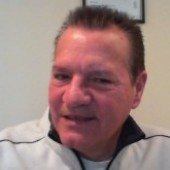All too often in my newsletter Market Tea Leaves I use and mention the term “Smart Money” and many times subscribers will ask what do you mean by this? Therefore I feel it is appropriate that I define this better.
The Smart Money is for lack of a better term the institutional investors. They are the Goldman-Sachs, JP Morgan, Morgan Stanley’s of the world. We could also throw in Bank of America (formerly Merrill-Lynch). In essence they could be described as any large institutional investment firm that has the goal and objective to manage other people’s money. That is their primary objective however remember that they are for profit firms; they are not charitable institutions and they are publicly traded which means they must show a quarterly profit. If they don’t, their shares will suffer. Because they are for profits entities they make money trading just as many retail traders do. However the major difference with them is when they trade they don’t trade 10 or 20 futures contracts at a time. They trade thousands, tens of thousands of contracts at a clip and as such have the power to move markets in one direction or another.
The term “Smart Money” came in vogue after the last financial crisis of 2008. Movies such as Margin Call, Inside Job and Too Big to Fail documented their activities during this crisis and some of that is still being felt to this day. In 2009 we learned that the Smart Money was initiating a policy and strategy commonly called PPT or Plunge Protection Team. This is a group of institutional traders who trade for those respective firms and are intent on doing two things: make sure the market doesn’t drop too far and increase the respective firms’ profit. At the time I was a member of Shadowtraders, headed by Barbara Cohen. Barbara Cohen was a programmer who had the unique opportunity to learn from floor traders on the CME (Chicago Mercantile Exchange). Barbara also runs a traderoom whereby we had the chance to see this live. Her comment: “as long as the smart money makes 3 points, they’re happy”. This was on the S&P ES futures contracts as again the Smart Money did not want to see a 1,000 point plunge as we witnessed in 2008.
The bigger question is why did the Smart Money do this? A few reasons. First, many of them owed money to the US government via the TARP program. Even if they were didn’t want or need the money many were forced to accept it as a measure that the banking and institutional firms were solid and solvent. This was documented in the movie Too Big to Fail. Second, they wanted to protect their own profits and in fact earn money. The truth is they’ve been doing this was quite some time. Firms such as Tradeguider brought this to light. Tradeguider is run by Gavin Holmes who was taught by Tom Williams. Their strategy is called VSA (Volume Spread Analysis) and they preach market manipulation. In other words, the markets are manipulated by the Smart Money. In truth they are. Gavin’s favorite quote: “if you walk into a casino and have to ask who the mark is? Well you’re it”. They point out that whenever you see a huge volume spike; the Smart Money will turn around and sell short the other way.
In 2009 we also learned about the advent of High Frequency Trading aka HFT. These are firms who’ve written programs to decipher current trading activities to determine direction going forward. They do this at the speed of nanoseconds and in many cases have co-location capability with many of the Smart Money. Because they operate at the speed of nanoseconds they’ve also written auto trading programs to determine the next trade. These firms do not sell to the retail trader but rather to the Smart Money firms as they have the capital to sustain them. It is estimated that HFT accounted for approximately 70% of all trading in 2011. Carl Weiss of Follow the Bots is a pioneer in creating a solution for retail traders called Sceeto. Sceeto tracks HFT trades with the intent of keeping the retail trader on the right side of the market.
John Karnas of Trend Following Trades has taken all of this a step further. His charts which run on NinjaTrader (as do all the solutions mentioned) are pristine and clear as to market direction at any point in time. John has also created auto trading solutions for the retail trader such that if an HFT attempts market manipulation, it will help to keep the retail trader on the right side of the market.
From my vantage point I’ve had the privilege of knowing and interviewing many of the persons I mention in this article. They all unique in one way or another but all have one common goal: to educate and teach the retail trader on how to make money in a manipulated market. As a retail trader you may be asking yourself how can I make money or compete with this. Your goal should not be to compete with this but to learn what they do and use it to your advantage. Remember the saying the “trend is your friend” Don’t fight the tape but rather learn from it.
